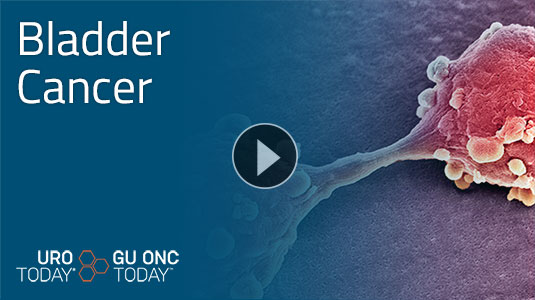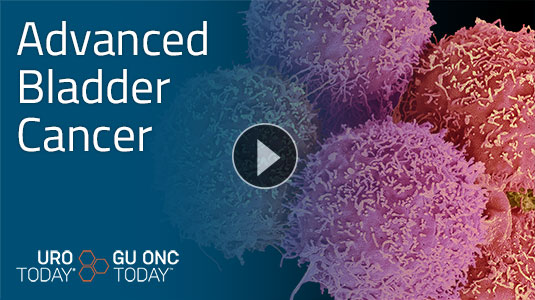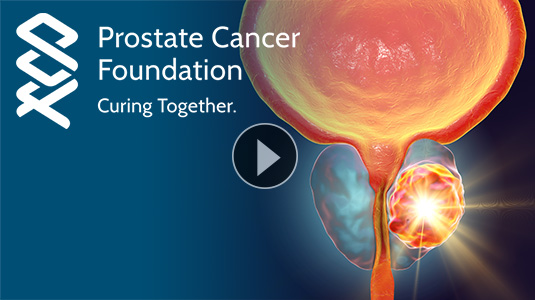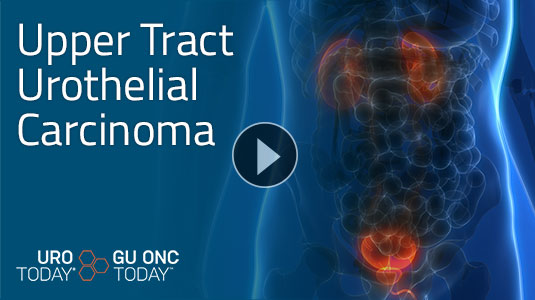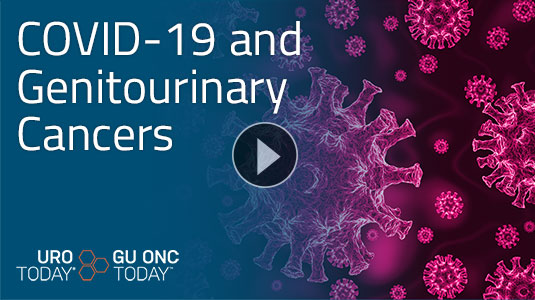Cretostimogene Grenadenorepvec: At the CORE and Forming BONDs in High-Risk NMIBC and PIVOTing into Intermediate Risk NMIBC
Written by Zachary Klaassen, MD, MSc, Wellstar MCG Health Georgia Cancer Center Augusta, Georgia, USA
December 12, 2023
Bladder cancer remains the sixth most commonly diagnosed cancer in the United States, with an estimated 82,290 incident cases in 2023.1 Because of the persistent recurrence risk of NMIBC in a highly comorbid population, there has been an FDA-led drive towards developing novel treatment options for these patients. The following article will highlight recent advances in this disease space with a specific focus on the oncolytic adenovirus agent cretostimogene grenadenorepvec, and the registration trial in intermediate risk non-muscle invasive bladder cancer (NMIBC), PIVOT-006.
Read More
Emerging Therapeutic Options for Low-Grade Non-Invasive Bladder Cancer: Primary Chemoablation
Written by Rashid K. Sayyid, MD, MSc University of Toronto Toronto, ON and Zachary Klaassen, MD, MSc Medical College of Georgia Augusta, Georgia, USA
October 17, 2023
Bladder cancer remains the sixth most commonly diagnosed cancer in the United states, with an estimate of 82,290 incident cases in 2023.
1 At diagnosis, approximately 75% of patients present with non-muscle invasive disease, with significant clinical heterogeneity observed within this disease group.
2,3 Patients with initial low-grade Ta disease (i.e., confined to the mucosal lining) represent a unique patient cohort given their favorable long-term oncologic outcomes
Read More
BCG-Unresponsive Non-Muscle Invasive Bladder Cancer: Review of Intravesical Chemotherapy and Photodynamic Therapy
Written by Rashid K. Sayyid, MD, MSc University of Toronto Toronto, ON and Zachary Klaassen, MD, MSc Medical College of Georgia Augusta, Georgia, USA
September 5, 2023
Intravesical Bacillus Calmette-Guerin (BCG) remains the current standard-of-care, guideline-recommended treatment of choice in the adjuvant setting for intermediate- and high-risk non-muscle invasive bladder cancer (NMIBC) due to its ability to reduce the risk of disease recurrence and, more importantly, disease progression.
1-3 Despite adequate BCG treatment up to 50% of patients will develop a BCG-refractory, relapsing, or failure state.
Read More
The Current Treatment Landscape of BCG-unresponsive Non-Muscle Invasive Bladder Cancer: N-803 and Viral/Bacterial-Based Therapies
Written by Rashid K. Sayyid, MD, MSc, University of Toronto, Toronto, ON and Zachary Klaassen, MD, MSc, Medical College of Georgia, Augusta, Georgia, USA
August 31, 2023
Intravesical Bacillus Calmette-Guerin (BCG) currently remains the standard-of-care, guideline recommended treatment of choice in the adjuvant setting for intermediate- and high-risk non-muscle invasive bladder cancer (NMIBC) due to its ability to reduce the risk of disease recurrence and disease progression. However, despite adequate BCG, up to 50% of patients develop a BCG-refractory, relapsing, or failure state.
4 Currently, radical cystectomy remains the gold standard approach in this setting.
Read More
Novel Treatment Options for BCG Naïve Non-Muscle Invasive Bladder Cancer: Immune Priming and Immune Check Point Inhibitors
Written by Rashid K. Sayyid, MD, MSc, University of Toronto, Toronto, ON & Zachary Klaassen, MD, MSc, Medical College of Georgia, Augusta, Georgia, USA
August 23, 2023
Immune checkpoint inhibitors have emerged as a guideline-recommended first line treatment option for patients with cisplatin-ineligible, metastatic urothelial carcinoma of the bladder and as second line therapy for patients with metastatic disease progressing during, or after, platinum-based combination chemotherapy.
1 Pembrolizumab, a Programmed Death-1 (PD-1) inhibitor, has been recently approved by the US Food and Drug Administration for the treatment of patients with Bacillus Calmette Guerin (BCG)
Read More
Novel Treatment Options for BCG Naïve Non-Muscle Invasive Bladder Cancer: Intravesical Chemotherapy
Written by Rashid K. Sayyid, MD, MSc University of Toronto Toronto, ON & Zachary Klaassen, MD, MSc Medical College of Georgia Augusta, Georgia, USA
August 22, 2023
Bacillus Calmette Guerin (BCG) is currently guideline-recommended in the adjuvant setting for patients with intermediate or high-risk non-muscle invasive bladder cancer (NMIBC).
1 This is based on the results of numerous randomized clinical trials and meta-analyses demonstrating its ability to reduce the rates of disease recurrence and progression, compared to transurethral resection of bladder tumor (TURBT) alone or other adjuvant therapies.
Read More
Mental Health in Bladder Cancer Patients: Clinical Implications and Outcomes
Written by Zachary Klaassen, MD, MSc, Medical College of Georgia, Augusta, Georgia, USA
June 29, 2021
In 2021 in the United States, there will be approximately 83,730 new cases of bladder cancer (~64,280 men and 19,450 women), and approximately 17,200 deaths from bladder cancer (12,260 men and 4,940 women). On a global scale, in 2017 it was estimated that there were 2.63 million (95% CI 2.57-2.72 million) bladder cancer cases, involving 2.03 million (95% CI 1.96-2.11 million) men and 0.60 million (95% CI 0.58-0.62 million) women. As such, although bladder cancer may be a lethal diagnosis for some, there are also millions of bladder cancer survivors worldwide.
Read More
Implications of Guideline-Based, Risk-Stratified Restaging Transurethral Resection of High-Grade Ta Urothelial Carcinoma on Bacillus Calmette-Guérin Therapy Outcomes - Beyond the Abstract
While the role of restaging transurethral resection (reTUR) for high-grade (HG) T1 bladder cancer has well-established diagnostic and therapeutic implications, and guidelines agree on the role of reTUR for HG T1 disease,
1-3 this remains an area of discussion for HG Ta tumors. The AUA recommends reTUR for all ‘high-risk’ HG Ta tumors (multifocal, ≥3cm, concomitant carcinoma
in situ [CIS], variant histology, lymphovascular invasion [LVI], prostatic urethral involvement);
2 while the EAU guidelines reserve reTUR for patients without muscularis propria in the index tumor specimen.
1 Read More
Institute for Clinical and Economic Review: BCG Unresponsive Disease
Written by Yair Lotan, Jonathan L Wright, and Angela B Smith
April 28, 2021
To address the importance of high-value care in the context of affordability and access, Institute for Clinical and Economic Review (ICER) an organization whose mission is to conduct evidence-based reviews of health care interventions, independently reviews evidence, free from financial conflicts of interest, to understand an intervention’s ability to extend or improve life, a fair price based on clinical evidence, and how stakeholders can translate evidence into real-world insurance coverage to improve patient outcomes.
Read More
Bladder Tumor Subtype Commitment Occurs in Carcinoma In-Situ Driven by Key Signaling Pathways Including ECM Remodeling - Beyond the Abstract
Written by Markus Eckstein, MD, Institute of Pathology, Friedrich-Alexander-University Erlangen-Nürnberg, Erlangen, Germany
February 3, 2021
It is profound that despite years of intensive therapeutic efforts, a staggering 50-60% of patients with muscle-invasive urothelial bladder cancer will have a local or distant disease recurrence within five years with only limited therapeutic options.
Read More
The Value of Multiparametric Magnetic Resonance Imaging Sequences to Assist in the Decision Making of Muscle-Invasive Bladder Cancer - Beyond the Abstract
Written by Marco Bandini, and Andrea Necchi
August 13, 2020
Over the last few years, the landscape of bladder cancer (BC) management has profoundly changed, thanks to increased knowledge of disease biology and the identification of novel therapeutic approaches and biomarkers.
1 No more than 5 years ago, the treatment-decision process for non muscle-invasive BC (NMIBC) or muscle-invasive BC (MIBC) was represented by radical surgery in most cases, with an opportunity for perioperative systemic therapy in a few cases. To date, the diagnostic and therapeutic armamentarium has been exceedingly enlarged for these patients.
Read More
Risks of Delaying Bladder Cancer Diagnosis- Surveillance and Surgery During COVID-19
Written by Zachary Klaassen, MD, MSc
April 20, 2020
The rapid spread of Coronavirus Disease 2019 (COVID-19), caused by the betacoronavirus SARS-CoV-2, throughout the world has had dramatic effects on healthcare systems with impacts far beyond the patients actually infected with COVID-19. Patients who manifest severe forms of COVID-19 requiring respiratory support typically require this for prolonged durations,
Read More
Beyond Bladder Cancer: Bacillus Calmette-Guérin (BCG) Vaccination Revisited as a Strategy to Reduce COVID-19 Related Adverse Events in High Risk Health Care Workers and the Elderly
Written by Vikram M. Narayan, Paul Hegarty, Gianluca Giannarini, Rick Bangs, Stephanie Chisolm, and Ashish M. Kamat
April 2, 2020
The ongoing pandemic involving severe acute respiratory syndrome coronavirus-2 (SARS-CoV-2) and its resulting coronavirus disease 2019 (COVID-19)
Read More
Safe and Efficacious Therapies Urgently Needed for the Difficult to Treat Non-muscle Invasive Bladder Cancer Patient Population
Written by Catherine Ryan
March 22, 2020
A newly published systematic review and meta-analysis: Evidence-based Assessment of Current and Emerging Bladder-sparing Therapies for Non–muscle-invasive Bladder Cancer After Bacillus Calmette-Guerin Therapy: A Systematic Review and Meta-analysis Read More
A Golden Age of Bladder Cancer Drug Development
Written by Noah M. Hahn, MD
July 12, 2019
Recent years have seen an explosive rate of transformative advances in both pre-clinical and clinical urothelial carcinoma research. With the public dissemination of comprehensive molecular data from The Cancer Genome Atlas (TCGA) urothelial carcinoma cohort,
Read More
Mapping Progress in Bladder Cancer
Written by Ashish Kamat, MD, MBBS
July 12, 2019
For those of us who take care of patients with the sixth most common malignancy in the United States and the seventh most common cause of cancer-related death,
1 it was disheartening that, as recently as 2015, patients with advanced bladder cancer had no effective alternatives to cisplatinum-based chemotherapy, a status quo that had persisted for three decades.
2 Read More
Epidemiology and Etiology of Bladder Cancer
Written by Justin T. Matulay, MD, and Ashish Kamat, MD, MBBS
April 16, 2019
Bladder cancer is the most common malignancy of the urinary tract and second only to the prostate in the entire genitourinary system. The most updated available global estimate, based on registry data collected through the year 2012,
Read More
Management of Non-Muscle Invasive Bladder Cancer
Written by Roger Li, MD and Ashish Kamat, MD, MBBS
April 16, 2019
In the previous sections, we have covered Epidemiology, Diagnosis, and Pathology of Bladder Cancers. As noted, most patients present at a potentially curative stage non-muscle invasive bladder cancer (NMIBC). Although NMIBC can generally be managed...
Read More
Diagnosis and Pathology of Bladder Cancer
Written by Justin T. Matulay, MD and Ashish Kamat, MD, MBBS
April 16, 2019
There are no reliable screening tests available for detecting bladder cancer; hence the diagnosis is usually made based on clinical signs and symptoms. Painless hematuria – microscopic or gross – is the most common presentation...
Read More

 Ashish Kamat, MD, MBBS, is a Professor of Urology and Cancer Research and Wayne B. Duddleston Professor of Cancer Research at MD Anderson Cancer Center in Houston, Texas. Dr. Kamat serves as President of International Bladder Cancer Group, (IBCG), and Co-President of International Bladder Cancer Network.
Ashish Kamat, MD, MBBS, is a Professor of Urology and Cancer Research and Wayne B. Duddleston Professor of Cancer Research at MD Anderson Cancer Center in Houston, Texas. Dr. Kamat serves as President of International Bladder Cancer Group, (IBCG), and Co-President of International Bladder Cancer Network.